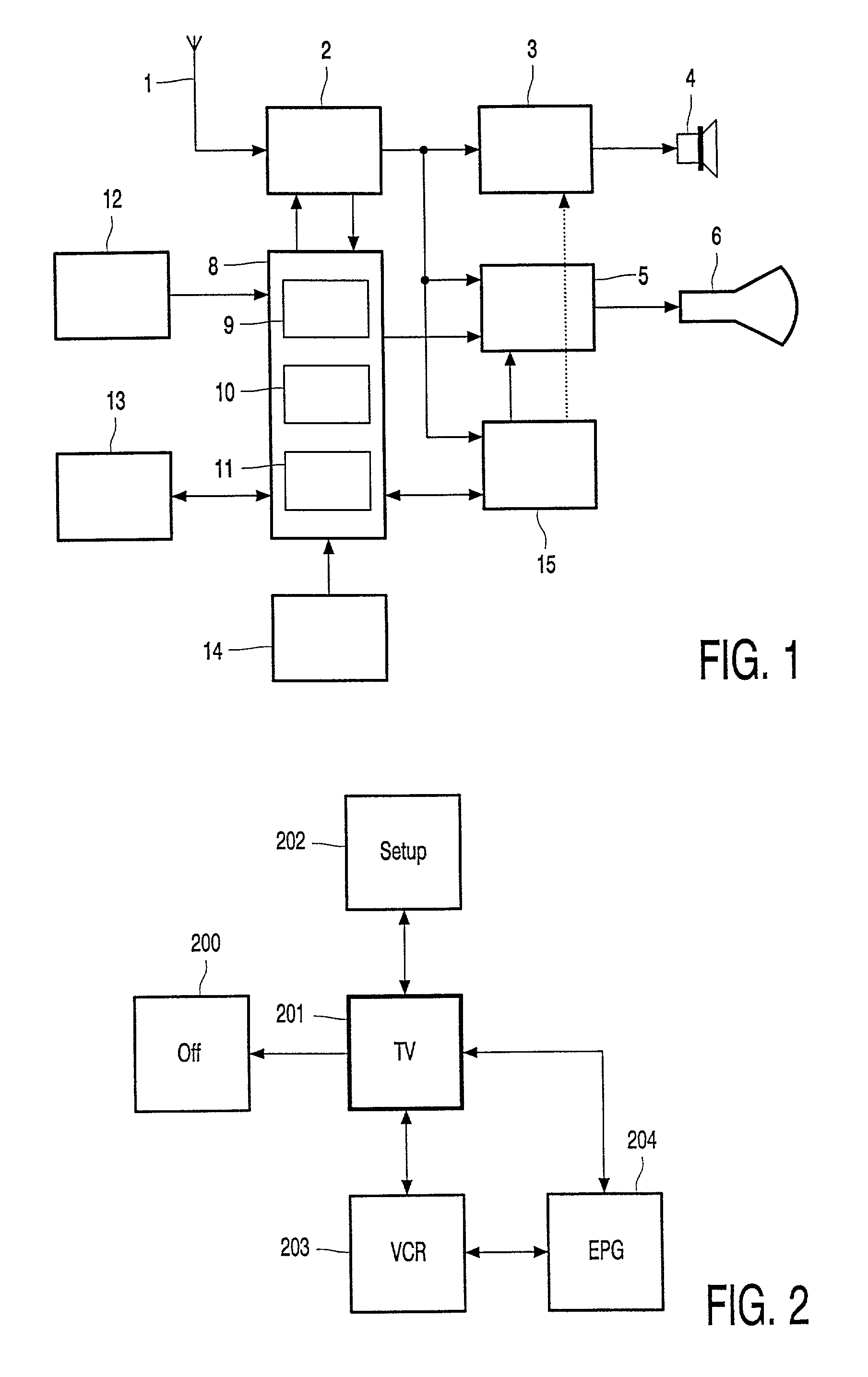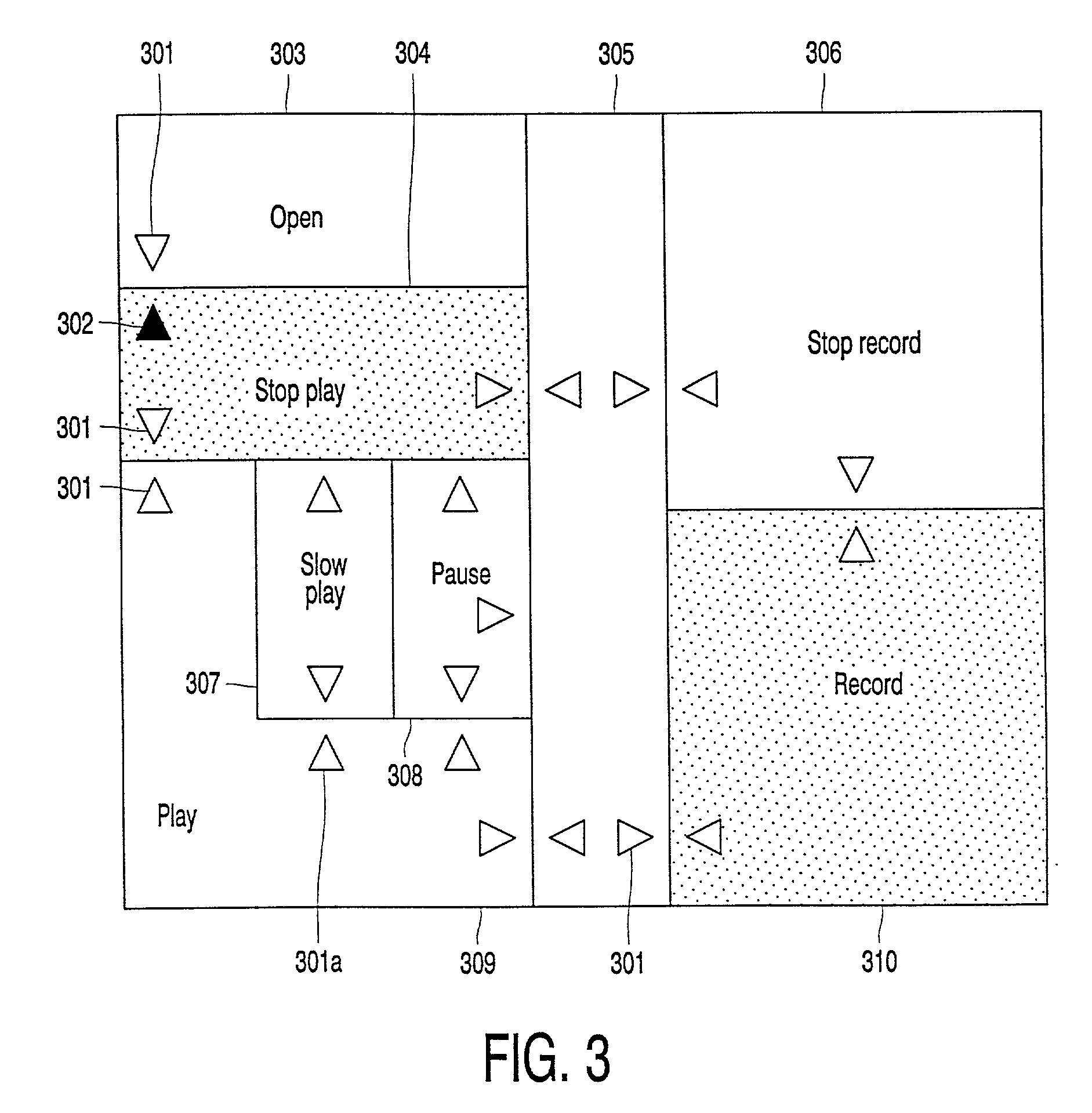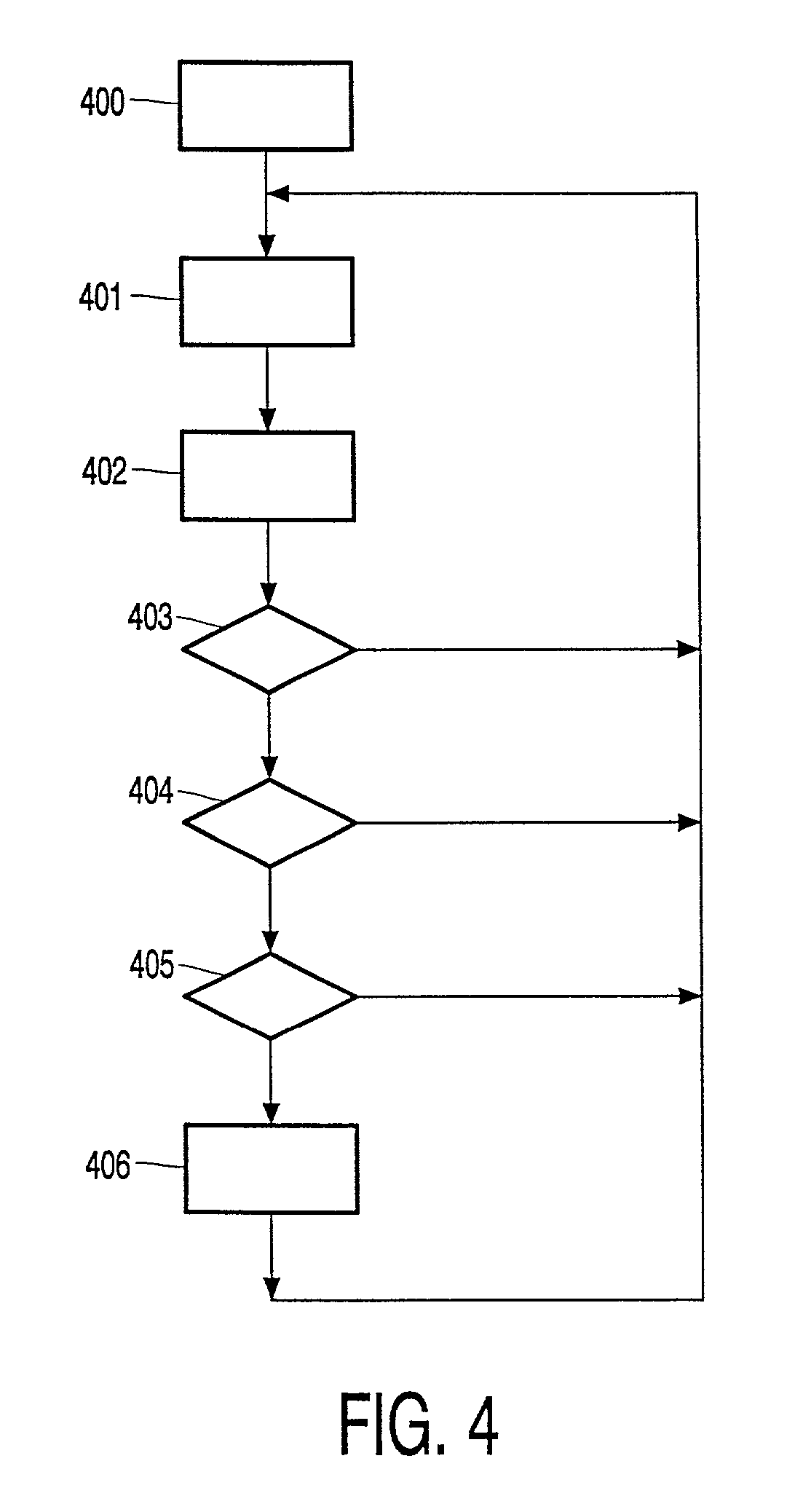Method of operating an appliance
- Summary
- Abstract
- Description
- Claims
- Application Information
AI Technical Summary
Benefits of technology
Problems solved by technology
Method used
Image
Examples
Embodiment Construction
[0017] FIG. 1 shows a diagram of a TV-VCR combination as an embodiment of the appliance according to the invention. TV signals are received from the ether by an antenna 1 or, alternatively, from a cable network. One of the TV signals is selected by a tuner 2 and is decoded and split into an audio signal, a video signal and a data signal. The audio signal is further processed by an audio processor 3 and a loudspeaker 4. The video signal is further processed by a video processor 5 and presented on a screen 6. The data signal is transmitted to a central processing unit (hereinafter "CPU") 8, which comprises one or more microprocessors capable of executing program instructions stored in a read-only memory (hereinafter "ROM") 14. These program instructions comprise parts of software modules including, a user control module 9, an EPG module 10 and a setup module 11. Data processed by said software modules, e.g. EPG data and user profile information, may be stored in a non-volatile memory ...
PUM
 Login to View More
Login to View More Abstract
Description
Claims
Application Information
 Login to View More
Login to View More - R&D
- Intellectual Property
- Life Sciences
- Materials
- Tech Scout
- Unparalleled Data Quality
- Higher Quality Content
- 60% Fewer Hallucinations
Browse by: Latest US Patents, China's latest patents, Technical Efficacy Thesaurus, Application Domain, Technology Topic, Popular Technical Reports.
© 2025 PatSnap. All rights reserved.Legal|Privacy policy|Modern Slavery Act Transparency Statement|Sitemap|About US| Contact US: help@patsnap.com



